At nighttime, ominous lightning flashes above erupting volcanoes light up the sky like a living nightmare. Now, scientists are closer to understanding volcanic lightning, which stems from both ash and ice. Below some amazing and recent pictures of this strange phenomenon captured during the latest eruptions of Anak Krakatau in Indonesia… And a short explanation on what creates them.
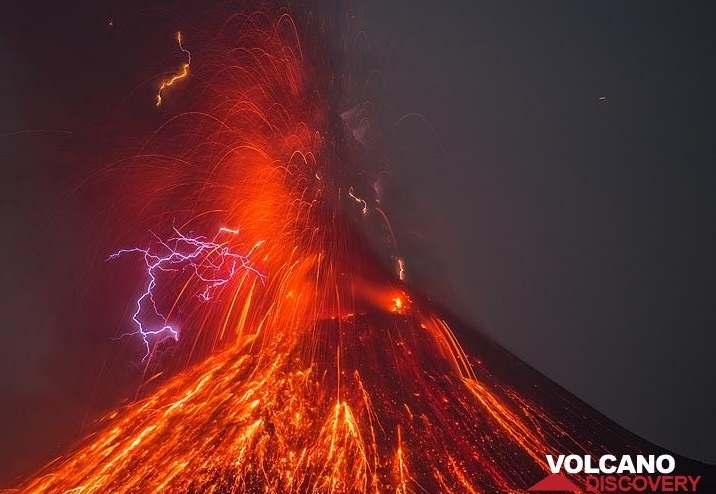
When hot, molten rock pushes its way up through the Earth’s crust and exits through to the surface, it often results in a volcanic eruption. These eruptions sometimes occur via slow and steady flows, but often show themselves in huge bursts of activity. When this latter case happens, a large amount of ash, dust, rock, volatile gases, and lava all are expelled in a very short period of time. While we might think of these as the major features of a volcano, there’s often a magnificent visual sight that accompanies these: volcanic lightning. Although not every eruption will produce this stunning light show, it’s been observed and recorded by humans for countless generations. Now, with our advanced understanding of physics and the physical sciences, we finally understand how it’s produced.
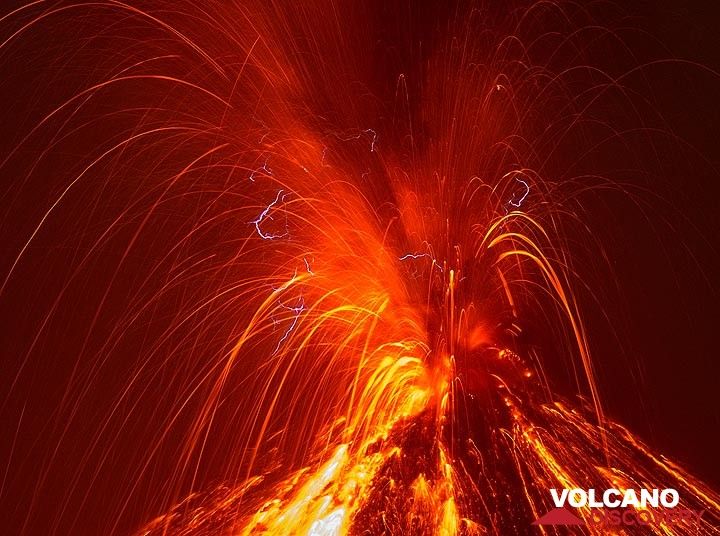
Magma, the subterranean predecessor to lava, can form in a variety of ways. Pockets of magma exist deep within the Earth’s mantle, originating as deep as the Earth’s liquid outer core, but are also created from the crust sliding over the top of the mantle. Either way, when liquid rock, heated to thousands of degrees, makes its way upwards to the crust, it can erupt through to the surface at a few select weak points. When this happens, not only does lava emerge, but is often accompanied by large amounts of soot and ash. And occasionally, if the recipe is just right, lightning as well.

Volcanic lightning appears to occur most frequently around volcanoes with large ash plumes, particularly during active stages of the eruption, where flowing, molten lava creates the largest temperature gradients. The phenomena of lightning has been exquisitely recorded around a number of recent volcanic eruptions, including Iceland’s Eyjafjallajökull, Japan’s Sakurajima, Italy’s Mt. Etna, and Chile’s Puyehue, Calbuco and Chaiten volcanoes. But what you may not know is this phenomenon was not only captured during Mt. Vesuvius’ last eruption in 1944, but was accurately described nearly 2,000 years ago when it erupted all the way back in the year 79!
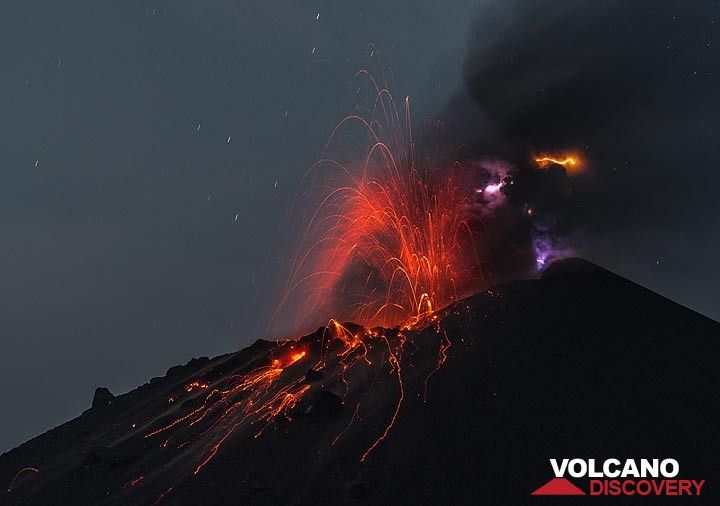
Each lightning strike is the exchange of some 1020 electrons, or — in long-form notation — 100,000,000,000,000,000,000 charged particles. You may be used to atoms being neutral, with equal numbers of electrons as there are protons in their nuclei, but heat and friction make it surprisingly easy for atoms to gain or lose electrons, transforming them into ions. At the temperatures that volcanoes achieve, it’s energetically favorable for an atom to become ionized, where it either picks up or loses an electron (or two, or three). We certainly don’t need to go these extremes to find ions; something as simple as rubbing your wool socks against the carpet is an example of transferring electrons and creating ions.
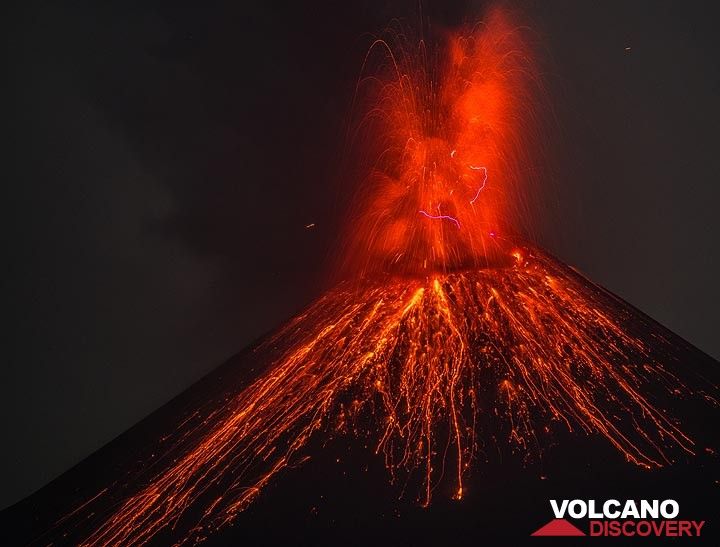
Now, if you can separate these ions from one another, you create a separation of charge, which creates a voltage. When the voltage between two regions becomes too great — even if air is the only thing between them — it spontaneously becomes conductive, creating a breakdown of the material between these distant regions. There’s an ensuing exchange of charge that happens extremely rapidly, and that’s what you see as a lightning strike! All told, there have been more than 150 different eruptions over the past couple of centuries where volcanic lightning has been recorded.
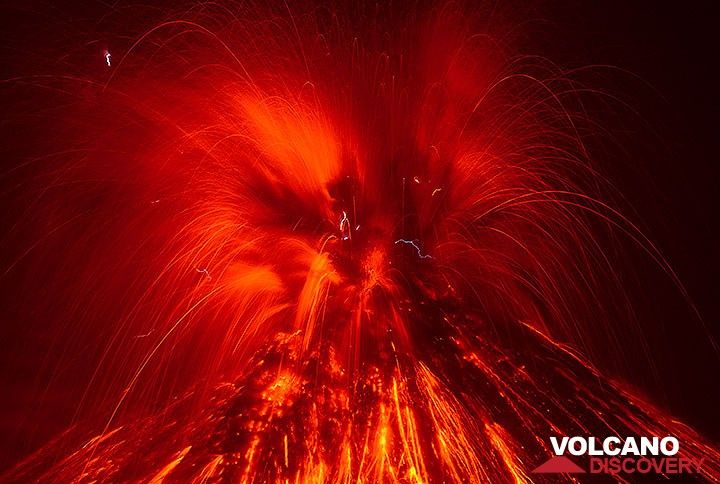
As complicated as this phenomena might appear to be, and as difficult as it is to predict which circumstances it will and won’t occur under, there are really only three steps you need to make it happen. Here’s the science of how volcanoes make lightning:
1.) Start with an abundance of positive and negative ions. The combination of heat (from typical volcanic temperatures of 1500 K) and the diverse composition of what’s unearthed by a volcano ensures a significant fraction of particles coming out are not neutral. Electrons can relatively easily be kicked off of some molecules and absorbed by others; for the individual ash particles that come out, many are positively charged ions and many are negatively charged ions. The hotter a volcano is and the more violent the eruption, the greater the likelihood of seeing volcanic lightning.
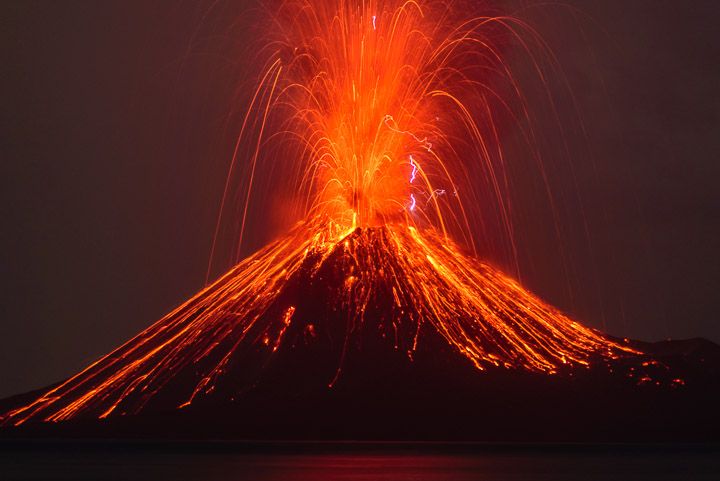
2.) Separate the negative charges from the positive ones. Neutral atoms have different physical sizes from one another, and charged atoms (and molecules) have that difference exaggerated even moreso. There are also significant mass differences between different atoms-and-molecules, which is important because giving the same amount of energy to a lighter particle means it winds up moving faster. And finally, there’s also a temperature gradient, where the particles just coming out have higher temperatures than the ones that have been in the atmosphere for some time. This combination of different temperatures and different masses give these ions different speeds from one another. And when you have a turbulent environment, smaller and lighter particles are typically transported greater distances more easily, making it easy for charges to separate by large distances.
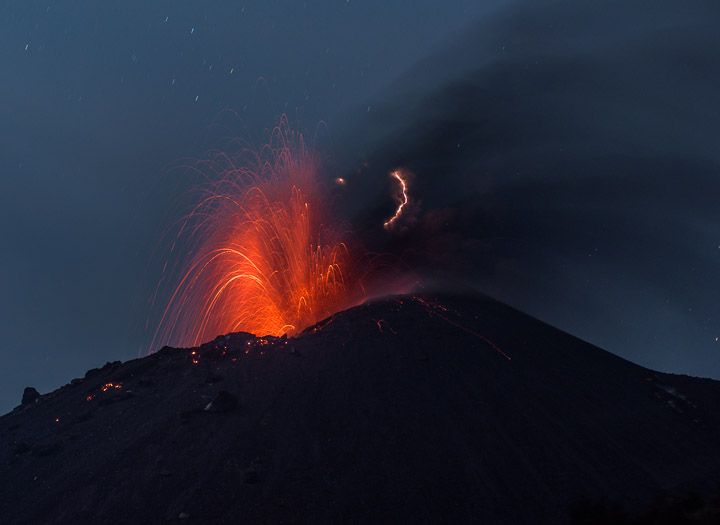
3.) A large enough amount of separated charges will flow on their own, creating lightning. Separated, large numbers of charges create a voltage difference. If you have a large enough difference over a space containing any material, even if it’s an insulating or extremely sparse material like air, you’ll get an electrical discharge, which is a lightning strike!
Below, a dramatic eruption of Sakurajima volcano generates numerous thunderbolts, creating an awe-inspiring display:
Yes! That’s it! All it takes is heat, ionization, a diversity of molecules, and transport, and when enough charge separates over the right distance, electrical discharges occur. That’s how you make volcanic lightning, and the spectacular result is unlike anything else in the world.
By the way, you can support Strange Sounds by becoming a Patron on Patreon or donating through Paypal. Please and thank you.
Always have a look to Volcano Discovery to know which volcanoes are currently erupting and to book your next volcano tour.


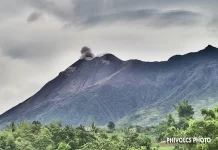










Mike, Go stand in the corner and stare at your hands.
You take the awe out of awesome.
Ok, times up tell us about your hands Mike.
right
your explanation is not even close to reality
see
the thunderbolts the electric universe website for a slightly more coherent and slightly more accurate explanation
WOW… can anyone guess who has no sense of humor AT ALL??
something has made it very angry, i think its hillary clinton who is not in jail?